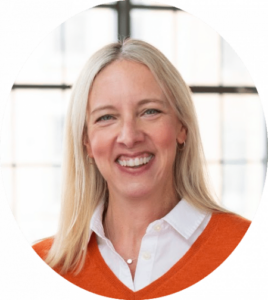Why I Quit Primary Care

It was 9:10 a.m. on Monday, and I was already running behind.
My patient care day started at 8:30 a.m. How could I already be running behind?
Schedule check: It will be impossible for me to catch up, unless…someone doesn’t show up. I take a deep breath and make a wish for a patient to not show up.
Wait, I thought. I love people. I love being a doctor. I chose family medicine to be closer to patients, spend time with them, know them over years and years of connection. Why was I wishing for them to not come into the clinic for their visit?
I had been having similar moments for more than a decade: pleading, bargaining, wishing. Somewhere along the way, the tidal wave of burnout overtook me, and washed me up on an unrecognizable island. Where am I? Who am I?
At the time of that Monday reckoning, I worked for a large “health care system.” The clinic I worked in was one of dozens of clinics owned by the system. Each clinic was plagued with inefficiencies on top of inefficiencies that were reflected in the system as a whole. Case in point: by the time I quit, that system had 378 vice presidents on the payroll. I’m not sure what they did, but they were everywhere. At the clinic level, there were two, then three, then four staff at the front desk, grumpily going through a check-in process that most patients had already completed online. The inefficiencies and redundancies made every day feel like “groundhog day” and everyone left at the end of the day wrung out and feeling defeated despite our intense work all day. Despite all that hard work, our clinic was always in the red financially.
At some point along the way, medicine had become a business. And that is fine if the business is helpful, and lives up to its marketing tagline. The problem is, the values of the organization (make money, keep patients in our system and using all of our services) often times uncomfortably rubbed up against the values of the physicians (get my patient healthy, or keep them healthy, and make sure they use as little of the health system as possible). With the introduction of the insurance model, a strange third value entered into the equation (we’ll tell you what you will get paid, doctor, and it won’t be much).
In my own primary care practice (and the practices of those around me), the friction that was caused by clashing values and low reimbursement rates from insurance companies meant doctors were only going to survive if they saw an impossible number of patients each day. The “7 minute visit” (the time the doctor spent in the exam room) was the norm. Patients had complicated issues, and deserved so much more time. Add endless paperwork, documentation for billing (which changed at least twice per year, usually becoming more complicated). Medicine was becoming an assembly line, and actual care was in short supply. Patients suffered, I suffered, and I questioned why I became a doctor in the first place.
In the early days of medicine, the caring for patients part was baked into the job. That’s what doctors did: see a patient in the clinic or hospital, conduct a history, examine the patient, explain the conditions being considered, and sometimes order tests or treatments. They were invested in the whole process and in the relationship. There was commitment by the doctor to be there for the patient, and the patient could rely on that commitment. This is what people who decide to become physicians are imagining when they sign up for the training and, ultimately, their life’s work.
When I could not reconcile what I knew was good medicine for patients and my ability to give it to them, I quit primary care.
But I didn’t quit medicine, and thankfully, I didn’t quit caring.
I am still a practicing physician. I practice in a new way, using technology to meet people where they are. I give them lots of time, I listen, I teach them about their bodies, fix health issues at their root causes, and work on long-term health, whatever that means to an individual patient. I specifically do not describe myself as a “PCP” (primary care provider) but rather as a “personal physician.” This implies that connection, relationship, and yes, care are a part of what I provide.
I get very concerned about what will become of us when more and more doctors move into specialties other than family or internal medicine. When I practiced for the large health system, the majority of clinics in my part of town were staffed by 8-10 family physicians. A search of these clinics just today showed most had only 1-2 doctors, or nurse practitioners. None of the physicians at my previous clinic remain, just six years after I quit there.
My quitting has largely allowed me to heal from burnout and really enjoy taking care of patients again. It has also encouraged me to have thoughtful conversations with other doctors and patients alike about what is missing, what is desired, and what to do to try to make something better. What was in the past a desperate wish for a no-show patient to open a spot to breathe on my packed clinic schedule has been replaced with a hope that I will have the honor of serving everyone on my schedule today, tomorrow, and for the rest of my doctoring years.
If any part of this story resonates with you—whether you’re a patient, a physician, or someone wondering if there’s a better way forward—I’d love for you to be part of the conversation. Reach out, explore new models of care, and let’s imagine a future for medicine that works better for everyone.
